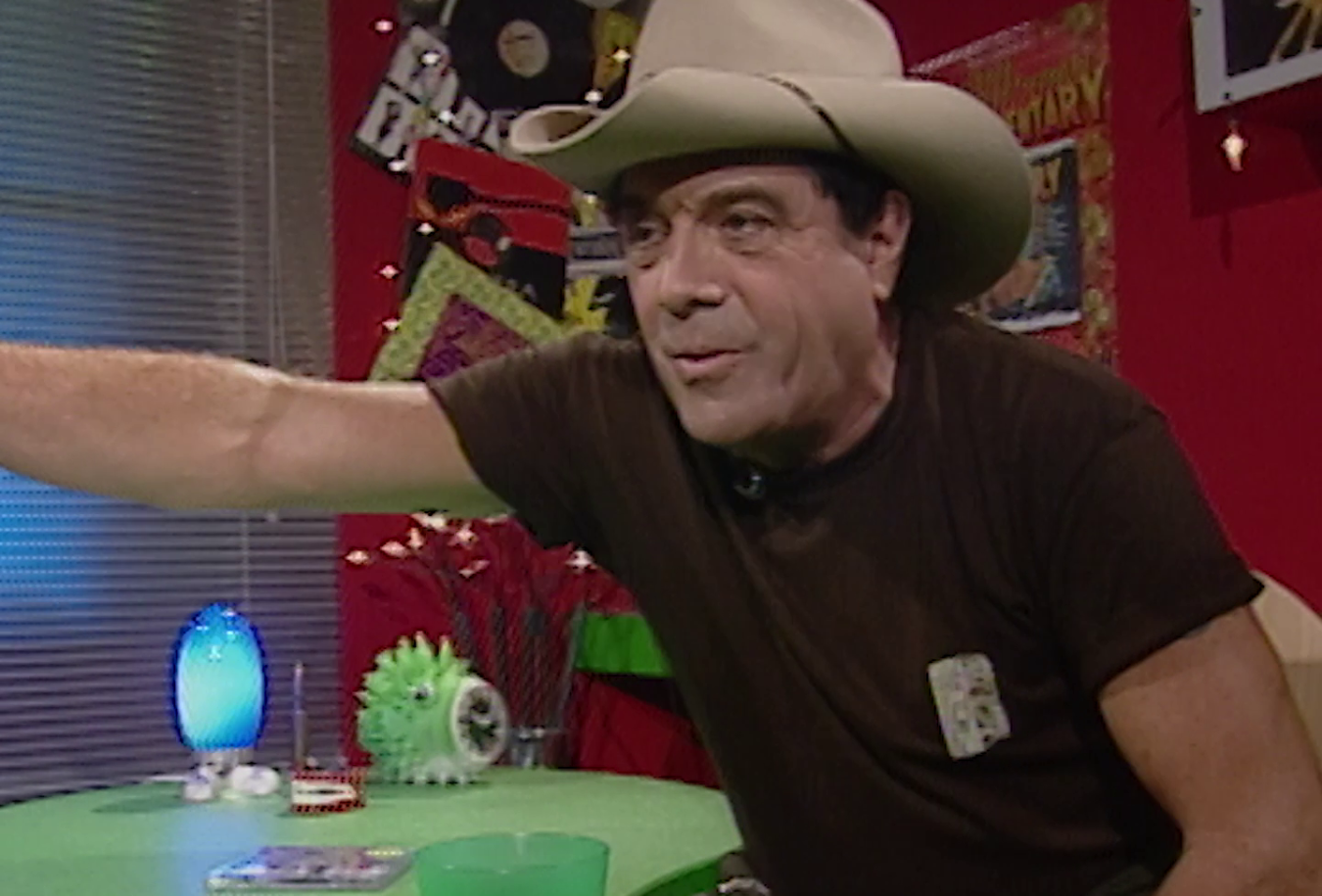
Dead Calm: Rae tries to slow the boat
Rae (Nicole Kidman) shuts off the engine and takes the key. Hughie (Billy Zane) tries to get it back but she’s too quick for him. Unfortunately, the dog is even quicker.
Summary by Paul Byrnes.
Unexpected use of humour, set up by an earlier scene where we see Rae playing fetch with the dog. Again, the scene has a metaphorical resonance. Rae enters the male world (the engine room) and tries to take control of the boat, to come up from below. It’s filmed like a sports event. Hughie sees the humour of it and even uses a sports metaphor to describe her temporary win. 'Helluva season ahead of her…’ Tension is relieved before it is rebuilt in the finale.
Dead Calm synopsis
Australian naval officer John Ingram (Sam Neill) and his young wife Rae (Nicole Kidman) take their yacht to sea to recover from the death of a child. Becalmed in mid-ocean, they rescue a frightened young American, Hughie Warriner (Billy Zane), from a sinking schooner. While John investigates the other boat, the psychotic Hughie takes control of the yacht and leaves him behind.
Curator's notes
Dead Calm is basically a dangerous hitchhiker story, set on water. The thriller elements are reduced to as few as possible – two boats, two men, one woman, one dog, and a cruel sea. Within this minimalist framework, the film carries a lot of subtext, to do with grief, passion and a form of resurrection. Rae is a broken woman at the start, marooned on a yacht with a husband who doesn’t know how angry he is. They have lost their son in a car accident in which she was driving. They are not a happy family. The stranger Hughie brings his own happy family fantasy with him.
Some of the creepiness of Zane’s performance comes from his willingness to believe Rae actually fancies him. They do have a sexual encounter in the film, but it’s shown as Rae’s ultimate self-sacrifice – and the turning point, in terms of her finding her own strength. The script, adapted from a 1963 novel by little known American pulp writer Charles Williams, plays with the conventions of the sun-sex-sailing fantasy. An idyll becomes a nightmare, and the sea (usually depicted in literature as female) rises up to punish them – or perhaps to aid another female. (The novel had been filmed already, in 1968 by Orson Welles, but that film was never completed).
Nicole Kidman was 20 when she was cast in Dead Calm in 1987. She had just become an overnight star in Australia in Kennedy Miller’s TV mini-series Vietnam. Within a year of Dead Calm’s opening in 1989, she was in Hollywood, starring opposite Tom Cruise in Days of Thunder – partly as a result of her performance in this film. Dead Calm also opened the Hollywood door for director Noyce. He would not make another film in Australia until Rabbit-Proof Fence, 13 years later.
Notes by Paul Byrnes
This clip starts approximately 47 minutes into the feature.
Rae cautiously enters the engine room of the yacht and fumbles for the ignition switch.
Rae Ah!
Nursing her hand, she manages to switch off the engine.
Up on deck, Hughie is smoking and listening to blues music. He jumps up when he realises the boat has stopped. He pursues Rae above and below decks until both are standing on opposite ends of the deck. She holds up the ignition key.
Hughie Score one for Mrs Ingram. She has a hell of a season ahead of her.
Rae throws the key overboard, but is dismayed to see her dog, thinking it’s a game, leap overboard to fetch it. Rae and Hughie both call out to the dog.
Rae Ben, no! No, Ben! Leave it! Leave it there.
Hughie Fetch, Ben, come on. Bring it here, boy.
Rae Alright, bring it here.
Hughie Stay, Ben.
Rae Come on. OK, drop it. Drop the key.
Hughie Hold the key, Ben.
Rae No, drop it!
Hughie Give it, boy.
Rae Over here, Ben. Come on!
Hughie Hey, Ben. Backstroke.
Rae Come on, Ben. Come on!
Ben swims to the boat with the key in his mouth. As Rae reaches to grab it from him, Hughie pulls at her hair from behind.
Rae Ah! Oh!
Hughie That’s beautiful bone structure there, Rae.
He pulls back her head and kisses her forehead. Pulling her by the hair he throws her to the ground.
Rae Ah! Ah! Ah.
Hughie pulls Ben onto the boat.
Hughie Good boy. He’s a champ, this one.
The National Film and Sound Archive of Australia acknowledges Australia’s Aboriginal and Torres Strait Islander peoples as the Traditional Custodians of the land on which we work and live and gives respect to their Elders both past and present.


